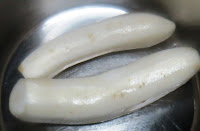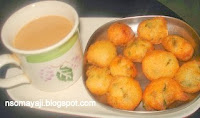Dals are used mainly in curries, sambar and palya (dry curry). Dals have good statagy in Indian cooking and Dals take the prominent place in the kitchen. Dals normally have lots of protein and especially the vegetarian gets the protein and other minerals from eating dals, in his or her day to day food.
Moong dal is low in fat and rich in potassium, calcium and B complex and vitamins. It is also a good source of protein and dietary firbre. It is easy to digest. Firbre in moong dal help to decrease high cholesterol.
Toor dal or Togari bele in Kanada language, contain folic acid which is very necessary vitamin for all the women. It is also an excellent source of carbohydrates and a healthy source of dietary firber.
Dil leaves contains many anti-oxidants, vitamins and dietary fibers which help to control blood cholesterol levels.
Moong + Toor dal and dil leaves Palya can be eaten with hot rice with ghee, chapatis, pooris, rotis and Parotas too. You can also eat them as it is since it has all the spice in it and it really taste yemmy.We can have them for breakfast, as snack or for dinner and all age group will definitely like this dish.
In the first step Dal idly is done and we can also eat them with chutney or with chutney powder.
The second recipe is "Palya" which is prepared using the ready idly.
Things Needed :
Moong dal is low in fat and rich in potassium, calcium and B complex and vitamins. It is also a good source of protein and dietary firbre. It is easy to digest. Firbre in moong dal help to decrease high cholesterol.
Toor dal or Togari bele in Kanada language, contain folic acid which is very necessary vitamin for all the women. It is also an excellent source of carbohydrates and a healthy source of dietary firber.
Dil leaves contains many anti-oxidants, vitamins and dietary fibers which help to control blood cholesterol levels.
Moong + Toor dal and dil leaves Palya can be eaten with hot rice with ghee, chapatis, pooris, rotis and Parotas too. You can also eat them as it is since it has all the spice in it and it really taste yemmy.We can have them for breakfast, as snack or for dinner and all age group will definitely like this dish.
In the first step Dal idly is done and we can also eat them with chutney or with chutney powder.
The second recipe is "Palya" which is prepared using the ready idly.
Things Needed :
Tour dal :1 Cup
Moong dal :1 Cup
Moong dal :1 Cup
Dil Leaves : 2 Bundles
Ginger : an inch
Green chilly :2
Coriander leaves : 1 bundle
Jeera : 1 Tea spoon
Pepper Pods : 5 to 6 pods
Pepper Pods : 5 to 6 pods
Salt : to taste
Asfoetida (Ingh) : a pinch.
Method
1. Wash and soak moong and toor dals.
2. Wash and cut Sabbasige (dil leaves), green chilly, coriander leaves and curry leaves. Grate ginger and keep these things aside. Grate coconut.
3. Now grind soaked moong, tour dals along with coriander leaves, curry leaves, ginger, jeera, pepper pods and green chilly. Grind to a rava consistency. Now remove the ground mixture from the jar and put this in to a big bowl.
4.Now add cut dil leaves, ingh and salt to the ground dal mixture and mix it well.
5. Apply oil to the idly plates and put a spoon of the ground mixture to all the plates.
6. Steam these dal idlies for 15 to 20 minutes in the idly cooker..
7. You can serve these idlies with ghee and any kind of chutney you have prepare.
Dal and Dil leaves Palya
Things Needed:
Mustard seeds : 1 Tea spoon
Urd Dal : 1 Tea spoon
Coconut : 3 to 4 Table spoons
Curry leaves : 5 to 6
Ready Dal Idlies : 6 to8
Oil : 2 Table spoon
1.Cut the ready moong + toor dal idly into pieces and keep it aside. ( or smash them with your hand in to pieces).
2. Keep a pan on the fire and heat. Put mustard seeds and urd dal.
3. Let the mustard seeds spurt. Add curry leaves.
4. Now add cut idly pieces and mix it thoroughly and cook on low flame.
5. Stir the mixture in between to avoid getting burnt.
6. Cook on low flame for 2 mintures and add coconut.
7. Mix well and serve Dal Palya with Hot rice or chaptis.
Note: Ground mixture should be rava consistency or the idly become sticky and palya also will turn into stick mixture. Cook idlies on medium flame for 20 minutes. You can also use methi leaves instead of dil leaves. Red chilly can be used instead of green chilly. This dough can be used for making Dal Vadas too.
Time : 40 minutes. ( + soaking time 3 hours)
Serves : 4 to 5
Ginger : an inch
Green chilly :2
Coriander leaves : 1 bundle
Jeera : 1 Tea spoon
Pepper Pods : 5 to 6 pods
Pepper Pods : 5 to 6 pods
Salt : to taste
Asfoetida (Ingh) : a pinch.
Method
1. Wash and soak moong and toor dals.
2. Wash and cut Sabbasige (dil leaves), green chilly, coriander leaves and curry leaves. Grate ginger and keep these things aside. Grate coconut.
3. Now grind soaked moong, tour dals along with coriander leaves, curry leaves, ginger, jeera, pepper pods and green chilly. Grind to a rava consistency. Now remove the ground mixture from the jar and put this in to a big bowl.
4.Now add cut dil leaves, ingh and salt to the ground dal mixture and mix it well.
5. Apply oil to the idly plates and put a spoon of the ground mixture to all the plates.
6. Steam these dal idlies for 15 to 20 minutes in the idly cooker..
7. You can serve these idlies with ghee and any kind of chutney you have prepare.
Dal and Dil leaves Palya
Things Needed:
Mustard seeds : 1 Tea spoon
Urd Dal : 1 Tea spoon
Coconut : 3 to 4 Table spoons
Curry leaves : 5 to 6
Ready Dal Idlies : 6 to8
Oil : 2 Table spoon
Method :
1.Cut the ready moong + toor dal idly into pieces and keep it aside. ( or smash them with your hand in to pieces).
2. Keep a pan on the fire and heat. Put mustard seeds and urd dal.
3. Let the mustard seeds spurt. Add curry leaves.
4. Now add cut idly pieces and mix it thoroughly and cook on low flame.
5. Stir the mixture in between to avoid getting burnt.
6. Cook on low flame for 2 mintures and add coconut.
7. Mix well and serve Dal Palya with Hot rice or chaptis.
Note: Ground mixture should be rava consistency or the idly become sticky and palya also will turn into stick mixture. Cook idlies on medium flame for 20 minutes. You can also use methi leaves instead of dil leaves. Red chilly can be used instead of green chilly. This dough can be used for making Dal Vadas too.
Time : 40 minutes. ( + soaking time 3 hours)
Serves : 4 to 5

















